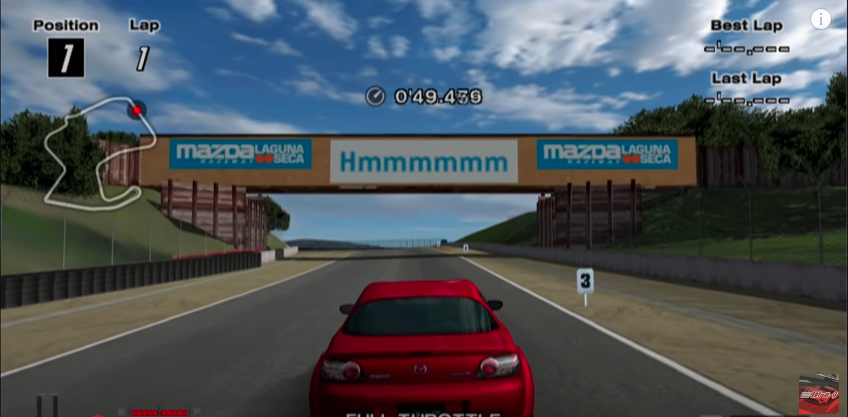In just three short weeks, the Gran Turismo movie hits the big screen with a full-fledged feature film based on the real life story of Jann Mardenborough, the British GT player turned actual race car driver. The film will be the fourth project from PlayStation Pictures to reach screens following the globe-charting Tom Holland vehicle, Uncharted, in 2022, The Last of Us television show released earlier this year, and the soon to be released television adaptation of Twisted Metal.
So what does a game that fancies itself “the real driving simulator” have in common with games about raiding tombs, surviving the fungal zombie apocalypse, or causing mayhem through vehicular combat? In short, each of these games was a system seller in their respective time, expanding the PlayStation install base and moving a trunk load of copies. And for Gran Turismo, that system-selling level of success started with the original game in the franchise when it debuted in December of 1997.


Released roughly three years into the console’s lifecycle, Gran Turismo stood out in the original PlayStation’s library for its emphasis on simulation and realism. A scant few console-based realistic racing games were around at the time, but they were drowned out bythe popularity of futuristic, Sci-Fi racers like WipeOut, vehicular smash-a-thons like Destruction Derby, and cartoony kart racers like Mario Kart 64. In fact, Gran Turismo used assets created for developer Polys Digital’s (later Polyphony Digital) first two games, the extremely wacky and clearly Mario Kart-inspired Motor Toon Grand Prix (1994) and Motor Toon Grand Prix 2 (1996).
In contrast to those other games, Gran Turismo simulated the life of a racer destined for greatness. Even the manual highlights this simulation aspect with sections on “inertial drift” and “conquering S turns.” In the beginning, players slum it a bit with starter cars and beginner racing events. To gain access to bigger and better races, players would need to undergo various driving tests and earn licenses. Each race was a chance for players to earn credits used to pack their garages with a fleet of increasingly impressive (and increasingly expensive) cars or to tune-up starting vehicles. Additionally, special prize cars could be earned by winning championships. Qualifying for races, souping up your car, bringing home race money, and expanding your garage proved to be a winning formula that made playing Gran Turismo feel like a seductive struggle for racing greatness.




But for those looking to just jump in the driver’s seat and go, Gran Turismo also featured an arcade mode that shirked the simulation aspects for a more straight ahead racing experience.
In total, Gran Turismo featured eleven race tracks and 140 real-world cars for tearing them up. Several Japanese auto manufacturers were featured such as Honda, Mitsubishi, and Toyota, but cars from Western manufacturers like Aston Martin and Chevrolet made the cut as well. In arcade mode, it was possible to unlock a 1967 Chevrolet Corvette and a 1998 Mazda Roadster.
To control these vehicles, Gran Turismo made use of the recently released PlayStation DualShock controller that featured two analog sticks and built-in vibration. These days a shaking controller is old hat, but back in the late ‘90s feeling something not entirely unlike engine vibration when playing a racing game was a novel experience.
Gran Turismo would go on to sell 10.85 million copies, launching a racing franchise that continues to this day and making its debut outing the single best-selling title on the original PlayStation. To put that in perspective, ranks two through five on that list include Final Fantasy VII with about 10 million copies sold, Gran Turismo 2 with 9.37 million, Final Fantasy VIII with 8.6 million, and Tekken 3 with 8.3 million. Even without the sales figures, the game’s attention to every vehicular detail and emphasis on building a racing empire has earned Gran Turismo its spot in racing game history.
